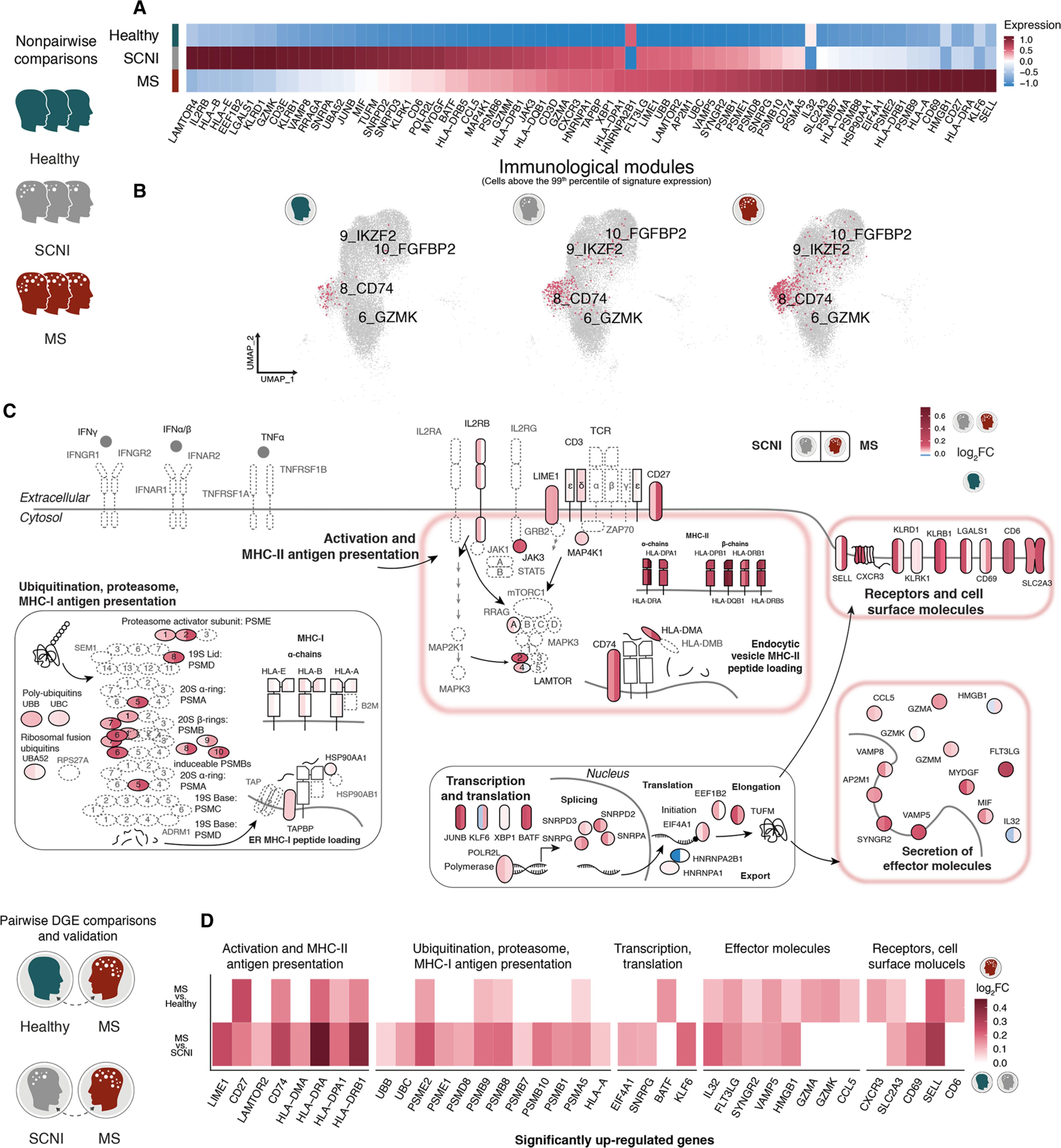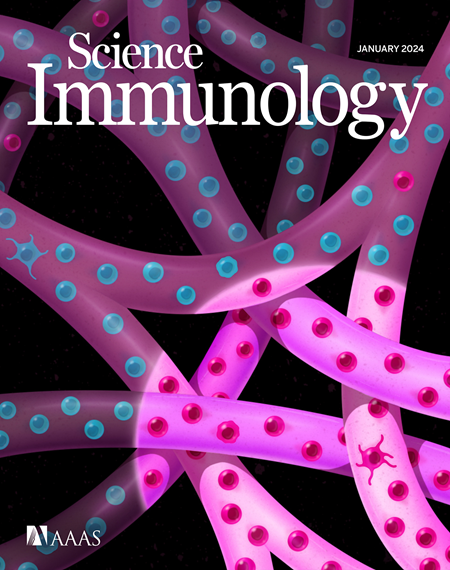双胞胎研究发现多发性硬化症患者 CD8 + T 细胞的早期免疫和代谢失调
IF 17.6
1区 医学
Q1 IMMUNOLOGY
引用次数: 0
摘要
多发性硬化症(MS)是中枢神经系统的一种炎症性神经疾病,在神经发炎之前有一个亚临床阶段。CD8 + T细胞在多发性硬化病灶中含量丰富,但它们在疾病病理中的潜在作用仍不清楚。利用高通量单细胞 RNA 测序和单细胞 T 细胞受体分析,我们比较了单卵双生子血液和脑脊液(CSF)中的 CD8 + T 细胞克隆,其中同卵双生子没有神经炎症或有亚临床神经炎症(SCNI)。我们发现了与多发性硬化症相关的外周免疫学和代谢改变,表明迁移性、促炎性和活化的 CD8 + T 细胞表型增强,这在患有 SCNI 的同卵双生子和多发性硬化症患者的独立验证队列中也很明显。总之,我们的深入单细胞分析表明了浸润的 CD8 + T 细胞对疾病的促炎作用,并确定了疾病前驱期和终末期的潜在免疫学和代谢治疗靶点。本文章由计算机程序翻译,如有差异,请以英文原文为准。

Twin study identifies early immunological and metabolic dysregulation of CD8+ T cells in multiple sclerosis
Multiple sclerosis (MS) is an inflammatory neurological disease of the central nervous system with a subclinical phase preceding frank neuroinflammation. CD8+ T cells are abundant within MS lesions, but their potential role in disease pathology remains unclear. Using high-throughput single-cell RNA sequencing and single-cell T cell receptor analysis, we compared CD8+ T cell clones from the blood and cerebrospinal fluid (CSF) of monozygotic twin pairs in which the cotwin had either no or subclinical neuroinflammation (SCNI). We identified peripheral MS-associated immunological and metabolic alterations indicative of an enhanced migratory, proinflammatory, and activated CD8+ T cell phenotype, which was also evident in cotwins with SCNI and in an independent validation cohort of people with MS. Together, our in-depth single-cell analysis indicates a disease-driving proinflammatory role of infiltrating CD8+ T cells and identifies potential immunological and metabolic therapeutic targets in both prodromal and definitive stages of the disease.
求助全文
通过发布文献求助,成功后即可免费获取论文全文。
去求助
来源期刊

Science Immunology
Immunology and Microbiology-Immunology
CiteScore
32.90
自引率
2.00%
发文量
183
期刊介绍:
Science Immunology is a peer-reviewed journal that publishes original research articles in the field of immunology. The journal encourages the submission of research findings from all areas of immunology, including studies on innate and adaptive immunity, immune cell development and differentiation, immunogenomics, systems immunology, structural immunology, antigen presentation, immunometabolism, and mucosal immunology. Additionally, the journal covers research on immune contributions to health and disease, such as host defense, inflammation, cancer immunology, autoimmunity, allergy, transplantation, and immunodeficiency. Science Immunology maintains the same high-quality standard as other journals in the Science family and aims to facilitate understanding of the immune system by showcasing innovative advances in immunology research from all organisms and model systems, including humans.
 求助内容:
求助内容: 应助结果提醒方式:
应助结果提醒方式:


